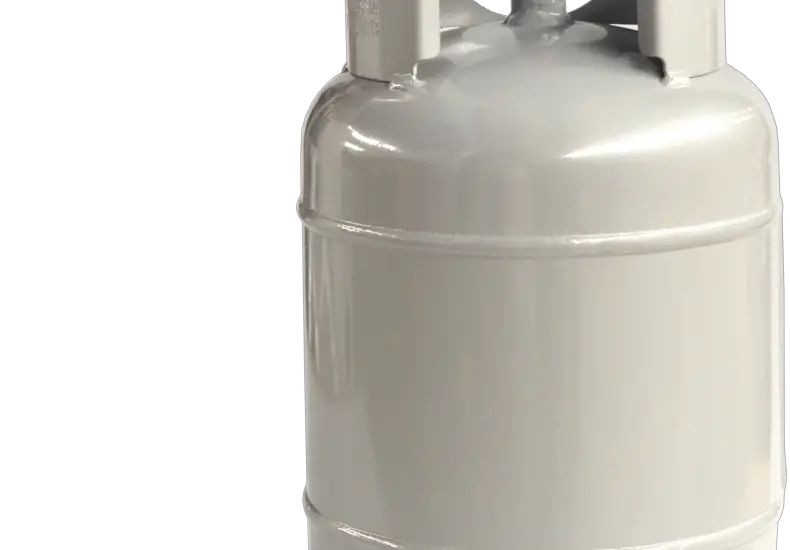The XP40 Refrigerant, you’ve likely heard of it, right? Especially if you’re in any way connected to the refrigeration or air conditioning sectors. Well, it’s a critical player, known for its effectiveness and efficiency in the industry. XP40 Refrigerant is like the key that unlocks the full potential of refrigeration and air conditioning systems, a secret weapon if you will, minus the secrecy, of course!

Table of Contents
Composition and Characteristics of XP40 Refrigerant
So, what exactly does this mystery key consist of, you ask?
What is XP40 Made Of?
Well, the XP40 refrigerant, also known as R-449A, is a blend of various refrigerants, namely R-32, R-125, R-134a, and R-1234yf. Each of these components plays a unique role, much like ingredients in a complex recipe, leading to a refrigerant mix that’s top-notch in performance.
Physical and Chemical Characteristics of XP40
XP40’s got some cool traits, making it a favored choice. It’s a non-toxic, non-flammable substance with a lower Global Warming Potential (GWP) compared to many traditional refrigerants. More so, it’s got a commendable energy efficiency rating that makes it cost-effective in the long run. Ain’t that something?
Applications of XP40 Refrigerant
Where does XP40 strut its stuff? Let’s find out.
Commercial Refrigeration
Businesses love XP40. Why wouldn’t they? It offers superior performance, and it’s perfect for both low and medium-temperature applications. Everything from supermarket refrigeration to cold storage facilities, XP40 is like a reliable workhorse that never disappoints.
Industrial Refrigeration
In the industrial realm, XP40’s resilience and energy efficiency make it a go-to choice for large-scale operations. Imagine a reliable teammate, always there, always delivering – that’s XP40 for you!
Air Conditioning Systems
And let’s not forget our cool savior during those blistering summer days – the air conditioning systems. XP40 plays a key role in ensuring that these systems are up and running, providing us with much-needed relief from the heat.
Benefits of Using XP40 Refrigerant
Are you thinking, “Okay, but why should I care about XP40?” Here’s why.
Energy Efficiency
First off, XP40’s energy efficiency is a big deal. Think of it as a hybrid car – it delivers the performance without guzzling up too much energy. In other words, it gets the job done while helping you save on energy costs. Cool, right?
Environmental Impact
Also, remember when we said XP40 has a lower GWP? That’s its way of being kind to Mother Earth. It’s a small step towards combating climate change, and every little bit helps!
Compatibility and Retrofitting Opportunities
Plus, it plays nice with most of the common refrigeration and air conditioning equipment, offering excellent retrofitting opportunities. It’s like the friendly new kid on the block that gets along with everyone!
Safety and Handling of XP40 Refrigerant
Now, let’s talk about playing safe with XP40.
Safe Handling Guidelines for XP40
Like any other refrigerant, XP40 should be handled with care. Protective clothing, safety glasses, and the works. It’s not that it’s dangerous, but we believe in the adage, “Better safe than sorry,” don’t we?
Potential Hazards and Mitigation
If mishandled, XP40 can cause issues like frostbite or eye irritation. However, with the right safety measures, such hazards can be avoided. So it’s like juggling – potentially hazardous if you don’t know what you’re doing, but perfectly safe with the right technique!
Storage and Disposal of XP40
And when it comes to storage, keep XP40 in a well-ventilated area, away from direct sunlight or any sources of heat. It’s like storing a good bottle of wine, just without the sipping part. As for disposal, it should be done as per local regulations to avoid any environmental harm. Yes, we’re back to caring for Mother Earth!
Check out these other related articles…
Refrigerant Phase Out: Your Detailed Guide
HFC Refrigerant: Your Ultimate Guide
HFC 410A Refrigerant: Your Complete Guide
CFC Refrigerant: A Comprehensive Guide
Refrigerant Viscosity: A Detailed Analysis
XP40 vs. Other Common Refrigerants
How does XP40 stack up against other refrigerants? Let’s take a look.
Comparison with R-22
XP40 vs. R-22, the old stalwart. While R-22 had its day in the sun, XP40 clearly outshines it with its lower GWP and energy efficiency. It’s like choosing between a vintage car and a modern, eco-friendly model. You know which one’s the smarter choice, right?
Comparison with R-404A
As for R-404A, XP40 again pulls ahead with its lower environmental impact. In terms of performance and efficiency, both are comparable. But when you factor in the lower GWP of XP40, it’s a clear winner. So, it’s like choosing between two equally skilled runners, but one has a lighter carbon footprint. Easy choice, isn’t it?
Comparison with R-134a
Finally, against R-134a, XP40 holds its ground with comparable efficiency and performance, but again, wins with its lower GWP. It’s like deciding between two smartphones with similar features, but one is made with more sustainable materials. Which one would you pick?
Regulatory Landscape for XP40 Refrigerant
Last but not least, let’s get into the regulatory stuff, shall we?
Global Regulations
Globally, the move is towards refrigerants with lower GWPs, and XP40 fits right into this narrative. Numerous countries have endorsed its use, recognizing its potential in mitigating climate change. It’s like when everyone started moving toward electric cars, remember?
U.S. Regulations
In the U.S., the Environmental Protection Agency (EPA) has approved the use of XP40 in various applications, echoing the global sentiment. It’s always reassuring when the big guys give a thumbs-up, isn’t it?
EU Regulations
Over in the European Union, the same positive trend is noticeable. XP40 is approved and increasingly used across the region, indicating a significant shift towards more sustainable refrigerants. It’s like Europe’s commitment to renewable energy – progressive and necessary!